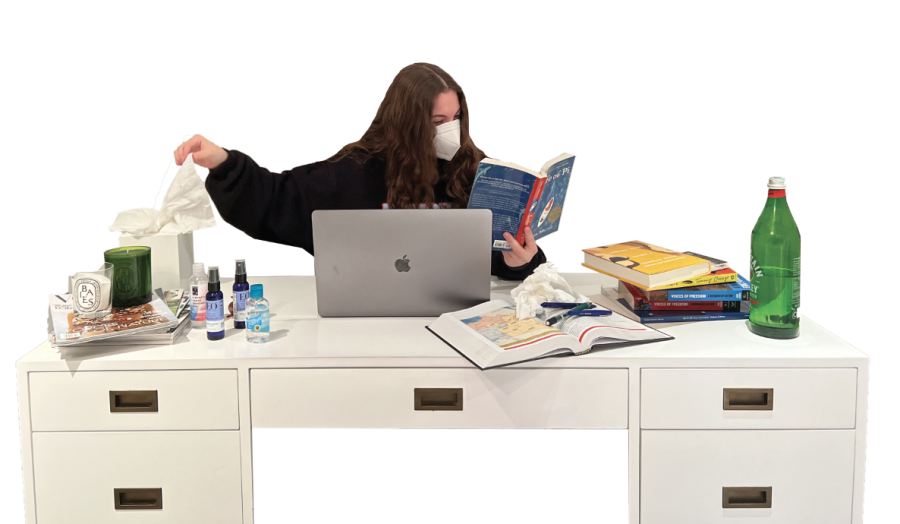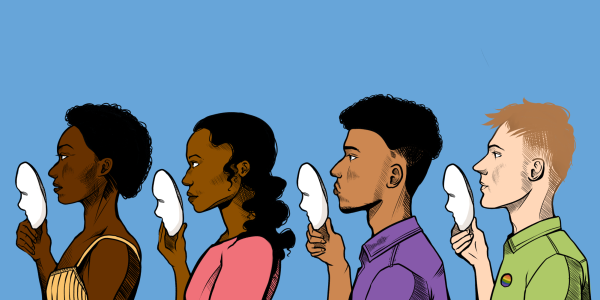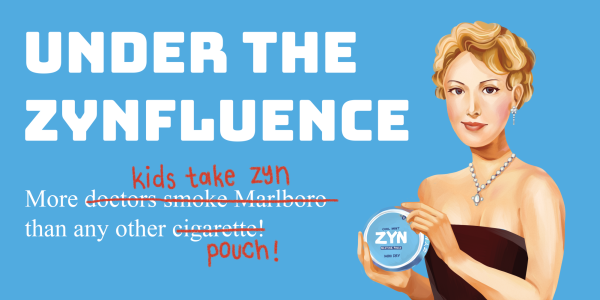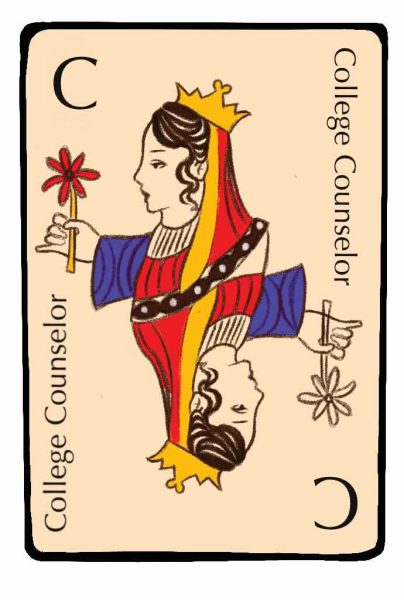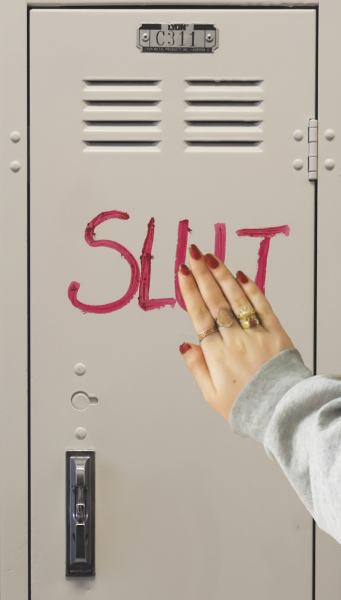Sick Day
Upper school students and faculty who have tested positive for COVID-19 reflect on returning to school remotely and virtual learning.
Staged student, Becca Berlin/Chronicle, continues her studies remotely while at home with COVID-19.
January 20, 2022
Annabelle Mass ’24 glanced at the carpool lane on the first day back from winter break, searching for friends to walk to class with. As she watched the line pass outside her window, she noticed her friend Polly* step out of her mother’s car. Mass said she intended to approach her to catch up and talk about their winter breaks but decided not to after remembering Polly’s mother recently tested positive for COVID-19.
President Rick Commons said there has been a recent surge in positive COVID-19 cases in an email sent Jan. 3. He wrote 8% of the community tested positive for the virus and can only return to campus once they have two negative PCR test results, but must remain online until they do so.
Ari Engelberg ’89 clarifies health protocols
Head of Communications and Strategic Initiatives Ari Engelberg ’89 said the school is testing regularly to protect the safety of students and faculty against COVID-19.
“[The school] will continue with pooled testing in our athletic programs and some other extracurricular activities as well,” Engelberg wrote in an email. “If a student or employee has recently had COVID-19, we are providing antigen testing on campus as an extra precaution to make sure that they are virus-free when they return.”
Engelberg said the school is following Los Angeles Health Department protocols for defining close contact. He said the school requires two antigen tests to confirm that the close contact is negative and have not received the virus. Engelberg said testing for those in close contact will occur on “day zero” and “day five” of exposure.
“Close contact means that you’ve spent 15 minutes or more over any 24-hour period within 6 feet of another individual,” Engelberg wrote. “It doesn’t matter if you’re masked or unmasked, or whether you’re indoors or outdoors, though if the contact was masked and, or outdoors it means a lower likelihood of transmission. If a close contact is not ‘boosted’ they are required to quarantine for five days.”
Though Engelberg said close contact guidelines are designed to help students and faculty feel safer during the return to school, Mass said it is unsettling knowing that there are students attending school in person who have had contact with others positive to COVID-19.
“I try to avoid being close to people at school,” Mass said. “I keep my mask up a lot around school because I know of so many people who have been or are living with people who are positive. It’s very unsettling to know students are coming onto campus under these conditions.”
Anonymous student discusses being in close contact with those who may have COVID-19
Beatrice* said a friend of hers who was informed, at school, that he was in close contact with an individual who tested positive. But she said she chose to physically distance herself by sitting in a new chair when she learned about their exposure to COVID-19.
“I was super nervous knowing that I had been in close contact with someone who had COVID-19,” Beatrice said. “I didn’t know what to do in my situation. The prioritization of school is very important [to] me, so I try to stay as safe as possible while I’m at school.”
Since Adrienne Usher ’22 tested positive Jan. 3, she said she has been working from home, engaging with class material through Zoom or asynchronous work provided by her teachers.
“My French teacher [World Languages Teacher Amandine Nelaton] has done a great job of keeping me engaged as I learn remotely,” Usher said. “I noticed she has made changes to class to adapt to the students who are online. She has provided me with all material needed for the time being, which has been very helpful.”
Teachers resume to remote teaching on “Zoom”
Nelaton said she would rather adjust class material for students who are on Zoom than have students miss class and fall behind on their work. She said she has opened in-class Zoom links and meeting times for students with COVID-19.
“I want my students to feel like they are still part of the classroom and learning process, even when they are home,” Nelaton said. “I have found that students were grateful they could still attend class, and they also know I am always available outside of class to meet with me and clarify what they did not grasp while Zooming.”
Nelaton said she plans to revisit activities she has previously used for online classes.
“One activity I did in my French IV classes was a verb review,” Nelaton said. “I had students in class working on individual white boards and those at home using the [Zoom] chat feature.”
Usher said Nelaton’s hybrid lessons have helped her participate in class, but she said some of her teachers have not been able to successfully include both online and in-person students in their lessons.
“[I have] really tried to actively participate in class, but it’s been difficult being the only [student] or one of two students on the Zoom call,” Usher said. “I ask questions through the chat to show I am engaged in the lesson, but there have been times [when my teachers] don’t respond because the majority of the focus is in the classroom.”
Usher said she has relied on FaceTiming her peers to stay on track in her classes. She said although FaceTime has been helpful, she still feels out of touch at home.
“Some of my teachers had review days the first few days back from school and didn’t create Zoom links, so I had to FaceTime my friends to keep up with the course material,” Usher said. “I feel like I’m the only person [quarantined] while 8% of the community has to go through this. I feel like I am a part of a minority.”
Usher said her symptoms included losing her sense of taste and smell, which she said affected her productivity levels because she was not eating sufficient amounts of food.
“Not being able to taste anything has affected my eating habits and appetite, which has affected my concentration levels,” Usher said. “I’m worried because I have a math final coming up, and [not eating enough] has caused me to not have the energy to study the amount I should be.”
Student with COVID-19 discusses remote learning at home
Will Chandrasekhar ’23, who said he tested positive for COVID-19, said the transition back to remote learning was easy for him because of his comfortability with his online learning routine from the last school year. Chandrasekhar said he was asymptomatic and that his health has not gotten in the way of his learning.
“Since coming back from break and testing positive [for COVID-19], I’ve had similar experiences to those from remote learning last school year,” Chandrasekhar said.
Chandrasekhar said his teachers were supportive of his absence by providing additional guidance to make sure was not falling behind with work.
“My teachers have Zoom meetings open for me to join, [they]email me assignments to work on asynchronously or send me guided notes to keep up with lesson plans,” Chandrasekhar said.
While Chandrasekhar said he is not concerned about missing out on the social aspects of school, Ella Goldberg ’23, said she tried to compensate for in-person interactions virtually.
“It’s really hard to know that [I was] stuck at home while [my] friends [were] all together during free and lunch periods,” Goldberg said. “Last year when everyone was online, it was a lot different because [we] were all in the same place. Being gone from school while my peers are still there is a weird feeling. I’ve felt a pressure to catch up with my friends through FaceTimes.”
Goldberg said returning to remote learning after attending classes on campus for the majority of the school year was challenging. She said her teachers provided her with the resources she needs, but she said she has struggled to find the energy to maintain focus on schoolwork since testing positive for COVID-19.
“I struggled with keeping up with the workload,” Goldberg said. “Being ill, whether physically or mentally, truly plays a large part in school stress. I think it makes it harder to be ill now that we have remote learning in place, because even if you’re not feeling well, you’re still expected to keep up with the workload.”
Faculty with COVID-19 teach from home
Math Teacher Kathleen O’Connor said she tested positive for COVID-19 one week before classes resumed after winter break Jan. 6. While teaching classes through Zoom when school resumed, O’Connor said she faced technical challenges.
“Going back online for a few days felt weird but was alright,” O’Connor said. “There were times I couldn’t hear everything that was going on while students were working. I had to rely on them [asking] me questions through Zoom when they were stuck.”
O’Connor said her students are more comfortable learning remotely this year than they were last year. She said teaching in person has helped her establish stronger communication with her students.
“Going online when you already know your students is much different than meeting them online,” O’Connor said. “Students are more willing to participate [in classes] via Zoom when [as a teacher] you have already established relationships in the classroom.”































